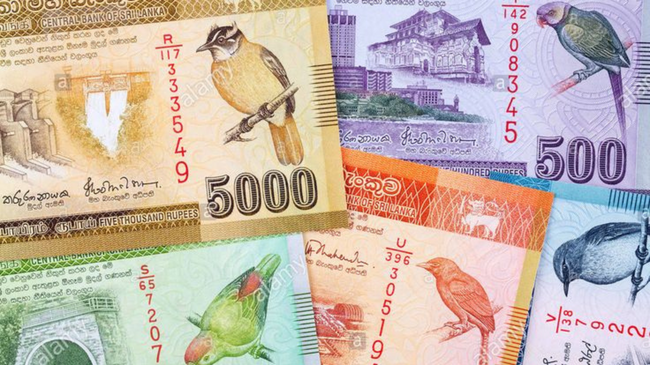Introduction
Located just off the southern tip of India, Sri Lanka, the resplendent island, has a history as vast and varied as the Indian Ocean surrounding it. Its vibrant tapestry of cultures, traditions, and history has shaped the island nation's socioeconomic landscape, including the realm of cash loans. Like many aspects of Sri Lankan life, the lending landscape is a mix of the old and new, traditional and modern, structured and informal. Let's take a journey through the picturesque lanes of Sri Lankan cash loans, understanding their historical evolution, benefits, potential pitfalls, and more.
Historical Framework
Situated at the crossroads of maritime trade routes connecting the East and the West, Sri Lanka has always been more than just an island; it has been a repository of diverse cultural and economic exchanges. Its history in trade, agriculture, and the global spice route has indelibly shaped its financial systems, especially in the domain of lending.
Ancient Sinhalese Kingdoms
In the days of Anuradhapura and Polonnaruwa, the ancient Sinhalese kingdoms had intricate systems of revenue and taxation. Agricultural endeavors, primarily centered on rice cultivation and the extensive canal-based irrigation systems, needed financial support. This led to the establishment of an early, albeit rudimentary, system of lending, often anchored by local chieftains or community leaders.
Arrival of Indian and Arab Traders
As early as the 5th century, traders, primarily from South India and the Arab world, began frequenting Sri Lankan shores. These exchanges weren't just limited to goods but also included financial systems, credit mechanisms, and monetary concepts, further enriching the island's economic practices.
European Colonization
The tides of change rose with the waves brought by European colonial powers, starting with the Portuguese in the 16th century, succeeded by the Dutch, and finally the British. Each colonial power, with its unique financial practices, influenced and altered Sri Lanka's credit landscape. The British period was especially transformative. British planters, with their vast tea, rubber, and coconut estates, required substantial labor and capital, leading to the birth of formal banking institutions. The colonial period, while bringing a structured financial system, also sowed the seeds of inequalities in access, with many indigenous Sri Lankans being left out of these formal systems.
Post-independence Transformation
After gaining independence in 1948, the newly-formed Sri Lankan government faced the challenge of addressing these inequalities. The next few decades saw nationalization drives, the birth of new financial institutions targeting the grassroots, and policies to make credit more accessible to the average Sri Lankan, irrespective of their socio-economic status.
As we proceed to explore the specifics, this historical foundation serves as a lens, offering context and nuance to the intricate web of cash loans in Sri Lanka.
Historical Facts
Ancient Trading Era
Historical records depict Sri Lanka as an epicenter of trade, with merchants from as far as Rome and China visiting its shores. Barter trade was prevalent, and any lending was primarily community-based, governed by mutual trust.
Colonial Influence (1500s-1948)
Portuguese, Dutch, and finally, British colonizers brought with them Western financial systems. British rule especially laid the foundation for modern banking in Sri Lanka, with institutions like the Bank of Ceylon, established in 1939, still in operation today.
Post-independence Era (1948 onwards)
With independence, the Sri Lankan government aimed to make financial services more accessible to its citizens. This period saw a rise in nationalized banks and reforms that aimed to reach even the rural populace.
Advantages
Diverse Lending Options
Sri Lankans can avail loans from a range of institutions - from traditional banks to microfinance institutions.
Government Initiatives
Various schemes target marginalized groups, ensuring financial inclusivity.
Favorable Interest Rates
Compared to some neighboring countries, Sri Lanka offers relatively low-interest rates, especially for agriculture and small businesses.
Disadvantages
Informal Lending Issues
Many still resort to village-level money lenders who charge exorbitant interest rates.
Debt Traps
With multiple loan options, many individuals and families often fall into debt traps.
Economic Vulnerabilities
Periodic economic crises in the country can make loan repayments challenging for borrowers.
Trends and Patterns
Digital Lending
Fintech startups are ushering in an era of digital lending, catering to the younger, tech-savvy generation.
Microfinance Growth
With a significant portion of the population involved in agriculture, microfinance institutions have seen substantial growth.
Foreign Loans
To fuel its development projects, the country has been taking significant foreign loans, a trend that has its implications on the national economy.
Tips
Be Informed
Ensure you understand the terms and conditions before availing a loan.
Plan Repayment
Use financial planning tools or consult experts to ensure timely repayment.
Avoid Multiple Loans
Taking multiple loans simultaneously can lead to financial strain.
Curiosities
Pawning
A traditional form of secured loan, pawning jewelry, especially gold, is a widely accepted practice in Sri Lanka.
Village Rotating Savings
Known locally as "Seettu," this is a system where community members contribute to a pot, which is then given to a member on a rotational basis.
Conclusion
Cash loans in Sri Lanka, while being a beacon of hope for many aspiring entrepreneurs, families in need, or farmers awaiting the next harvest, come with their set of challenges. As the nation strives towards economic prosperity, balancing the growth of accessible lending with responsible borrowing practices becomes crucial. With its deep-rooted traditions and an eye on modern financial practices, Sri Lanka's journey in the realm of cash loans offers insights and lessons for both its citizens and the wider world.

